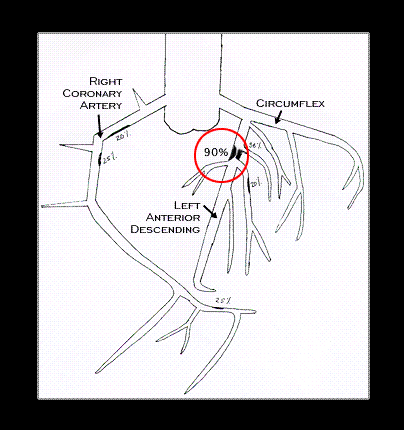
The coronary angiogram of this patient is illustrated here. It demonstrates the almost complete occlusion of the proximal portion of the left anterior descending coronary artery and suggests that the inverted T waves represented post-ischemic T wave changes.
